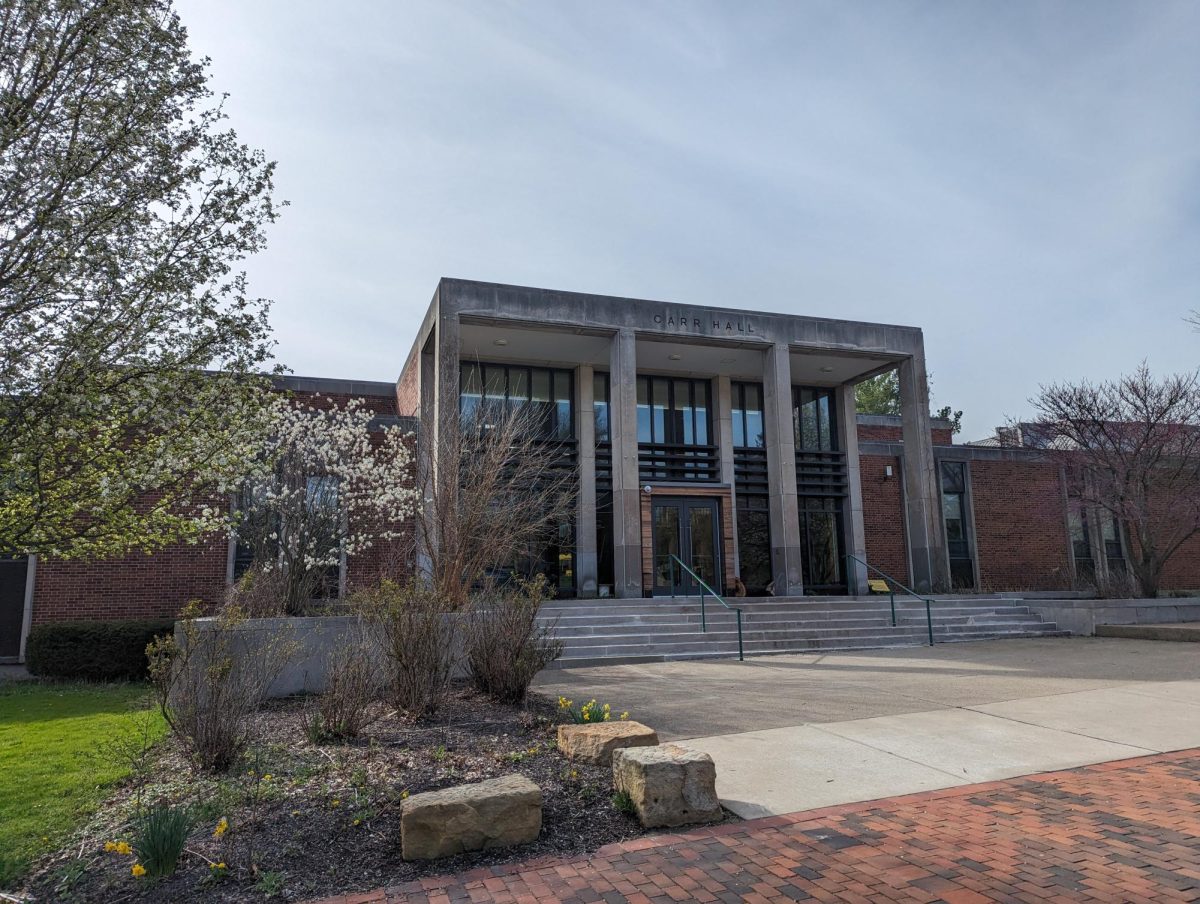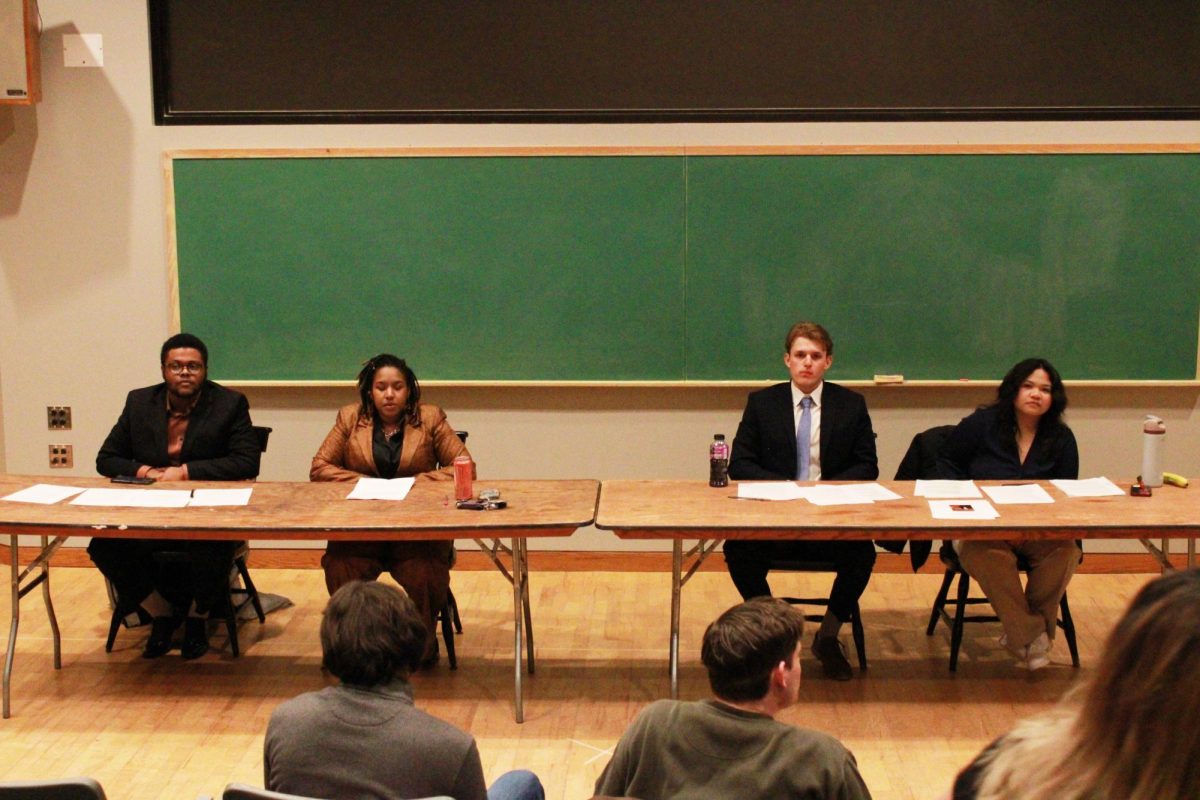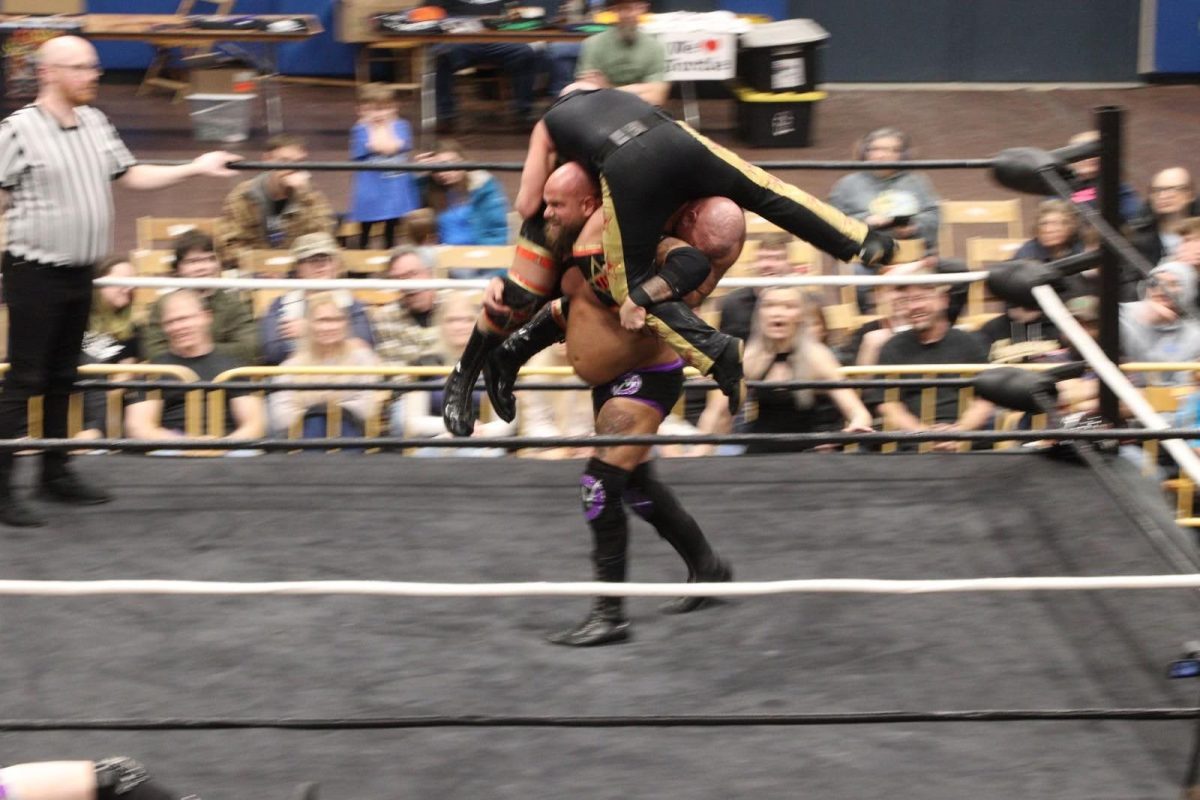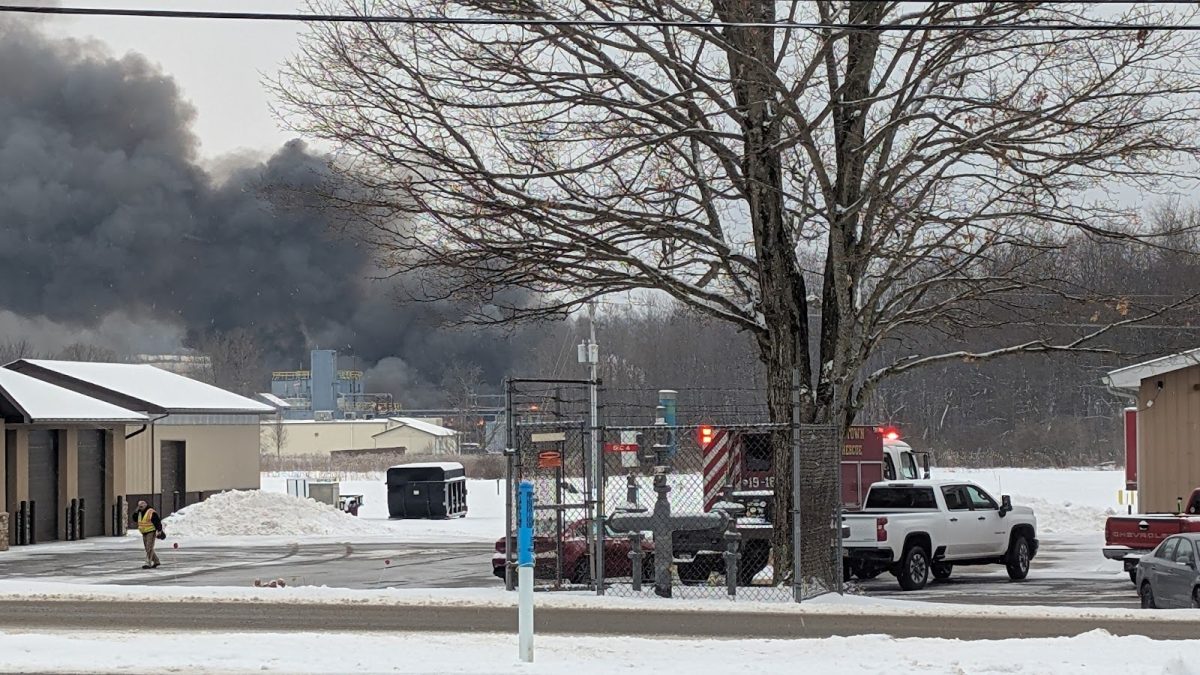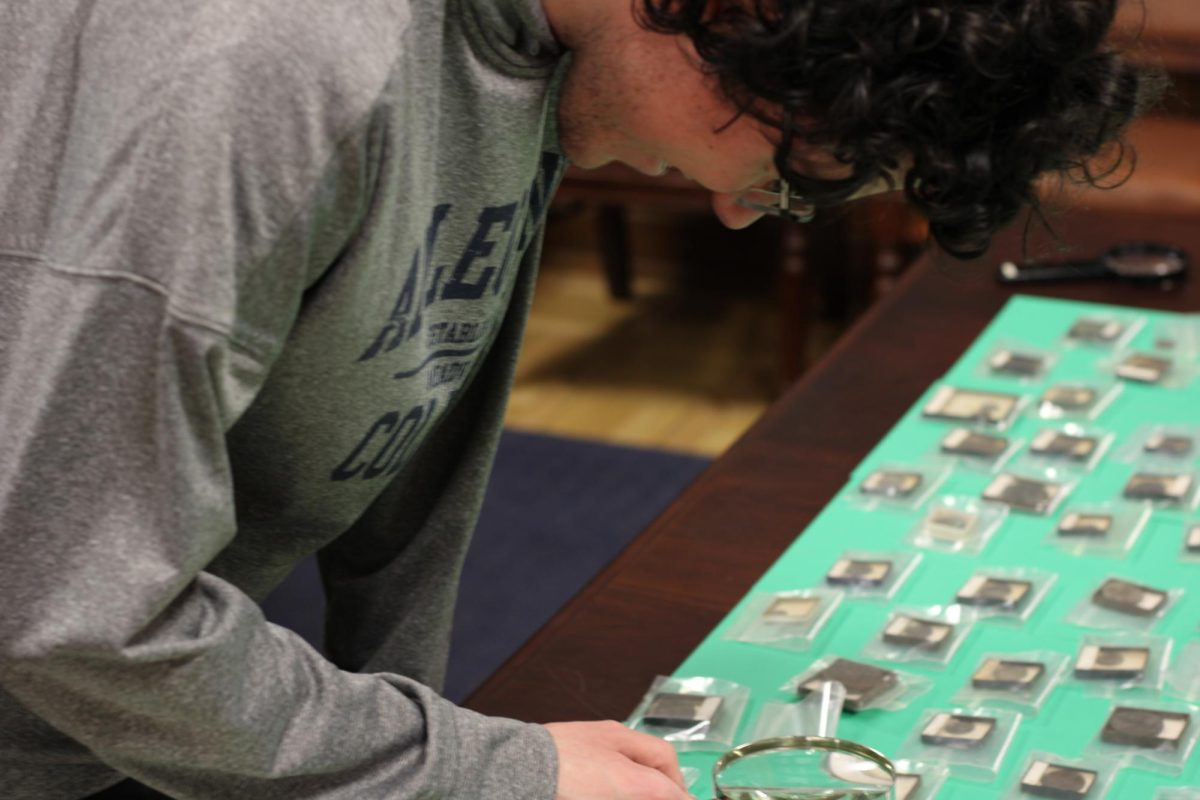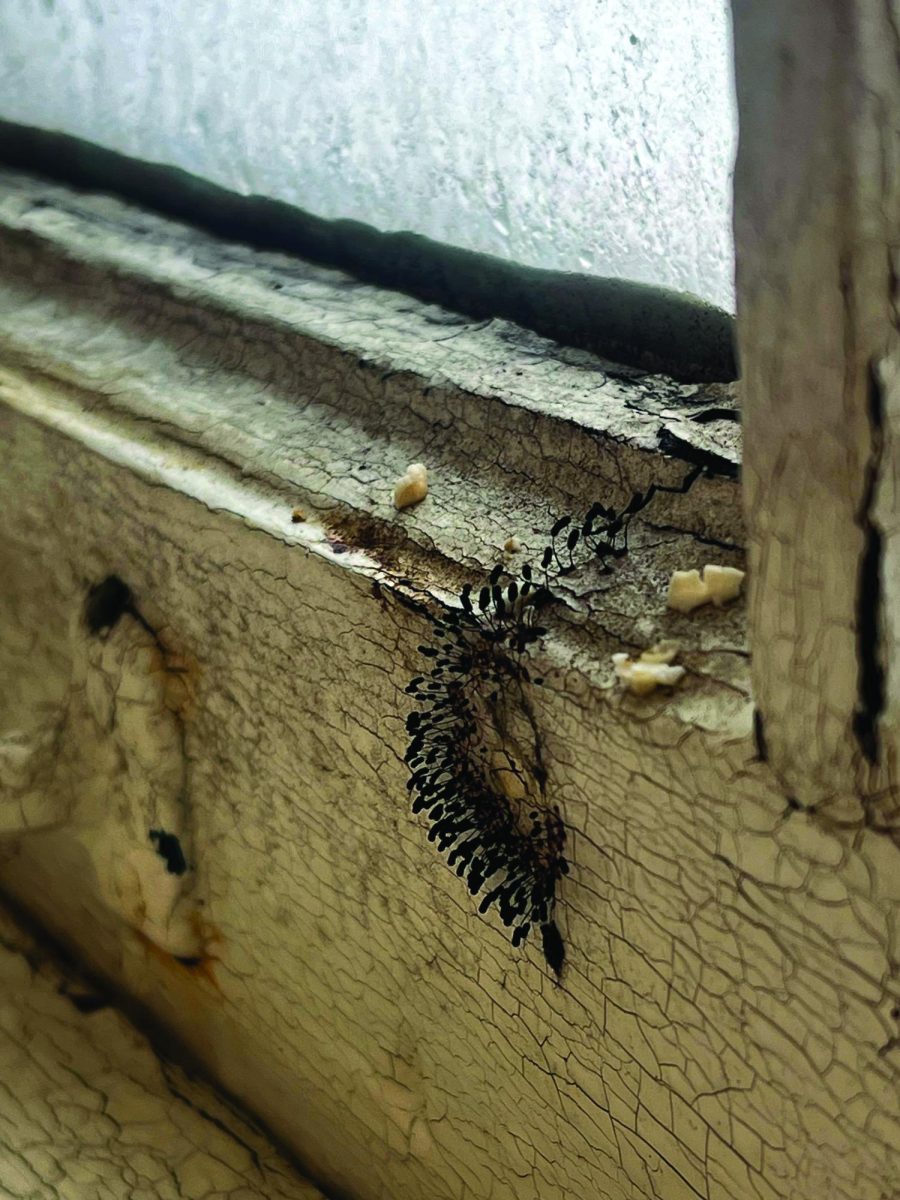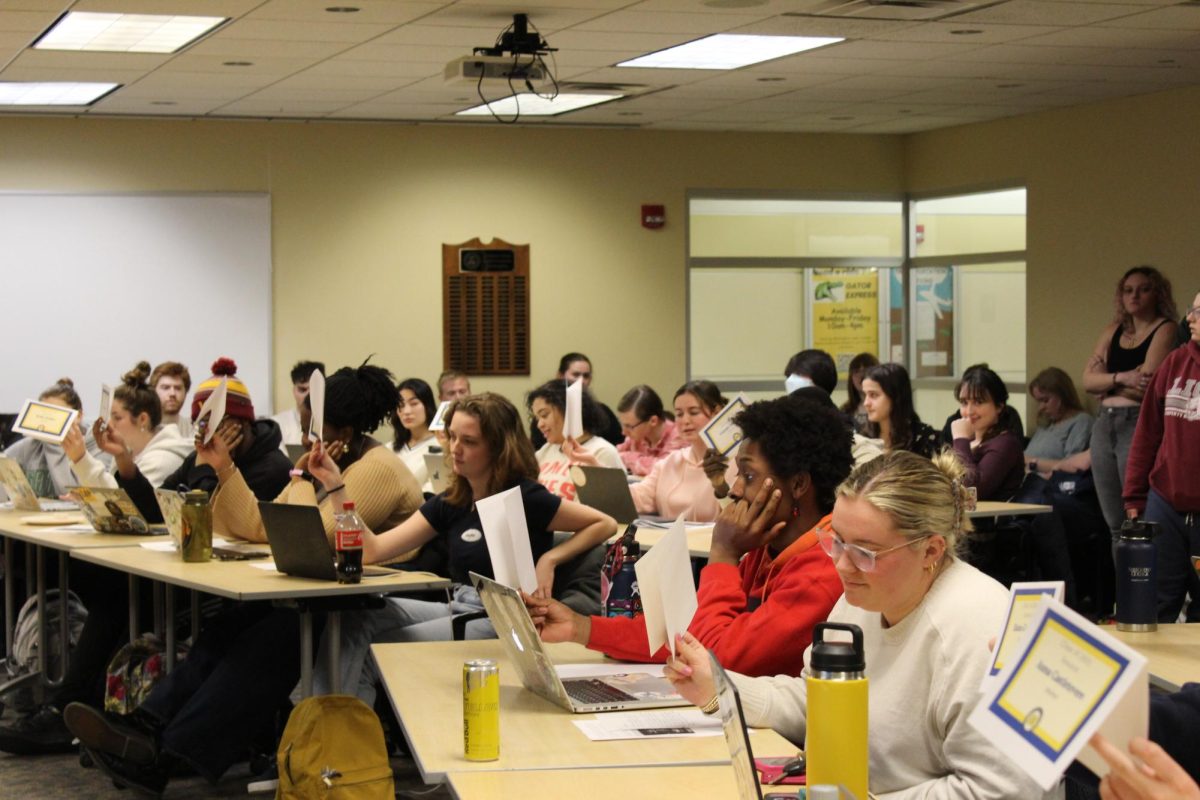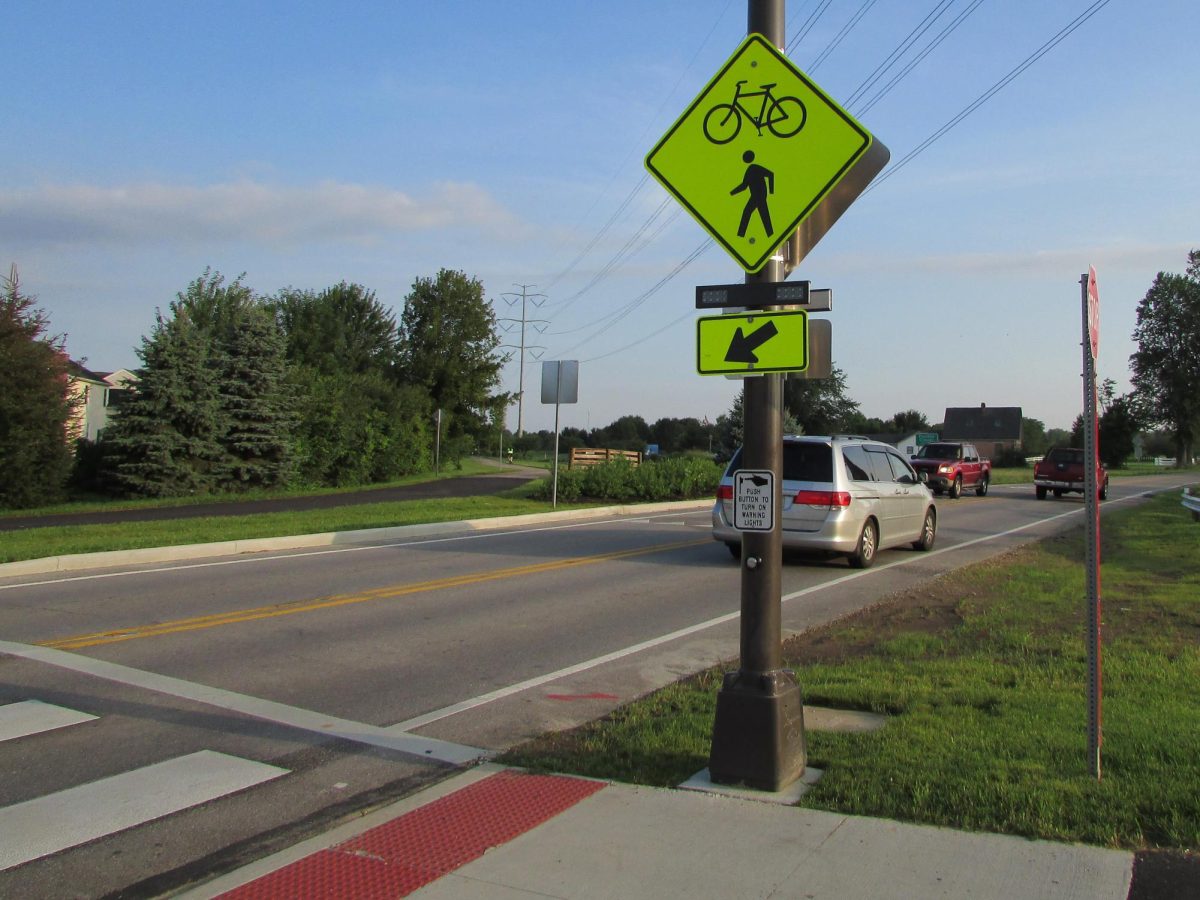It’s hard to miss the signs that Allegheny is environmentally-conscious. Look around campus and you will find examples like Carr Hall’s Carrden and the solar panels atop Steffee Hall of Life Sciences. Look beyond, and you’ll still see the reach of the Environmental Science and Sustainability program in additional solar panels throughout Meadville, in the revitalized Meadville Market House and in the sprawling PennDOT sign artwork upon entering Meadville.
You also needn’t look far to find a student majoring in ESS — there’s a good chance you are one yourself — or a faculty member who is in some way affiliated with the department. Director of Sustainability Kelly Boulton, ’02, explained that, in the midst of climate crises, sustainability is relevant to everyone.
“Whether you call it sustainability or not, it’s impacting your life,” Boulton said. “So even if you think that you don’t care about sustainability, it’s impacting your food, it’s impacting the quality of the air you’re breathing, it’s impacting the weather.”
However, the program has not always been as prominent as it is today, nor nearly as supported. Fifty years ago, the Environmental Science program — which did not yet include Environmental Studies or the term “Sustainability” in its program description — was started out of the biology and geology departments, and the first students to graduate with a degree in environmental science at Allegheny did so in 1973.
Christine Scott Nelson ’73 Endowed Professor of Environmental Science and Sustainability Eric Pallant was hired as the first full-time professor of the department in 1987. Alongside a biology professor who had a joint appointment with the ES department, Pallant shaped the department at a time when graduate programs in environmental science were unheard of and when interdisciplinarity and the sciences were mutually exclusive.
“We were in the natural sciences division, and were known as the ‘weak science,’ for anybody who was dropping out, who couldn’t handle the real sciences— biology and chemistry,” Pallant said. “They could go to ES and do just fine.”
The program soon brought in capable and passionate students, however. Environmental science offered tangible experiences, like building the Student Experimental Garden in 1994, which Pallant explained included funding, researching and creating space for the plants in the garden.
“The first time we took our junior seminars, we made them real world projects, which was a real break from the biology model,” Pallant said.
Pallant hired Professors of Environmental Science and Sustainability Rich Bowden and Terry Bensel in the few years after his arrival. Bensel — who is also the current chair of the department — expanded on this philosophy.
“Students learn by doing — we don’t just learn stuff, we learn how to do things, we learn how to solve problems,” Bensel said. “That’s always been the philosophy of ESS, which is hands-on, community-based, community-engaged, applied learning. It’s not like we don’t have lecture classes … but that is always in the service of applied, problem-solving, engaged learning.”
Boulton can speak from experience; her time as an ESS student encouraged her to not only pursue environmental work beyond graduation, but to return specifically to Allegheny because of her existing connections within the community.
“I know that one of the reasons I felt comfortable coming back — compelled to come back — is that my experience at Allegheny was not just on campus,” Boulton said. “And that was very much driven by my work with the environmental science department.”
The appeal of real-world work is also part of what has grown the department over the years. An increased amount of student interest has meant hiring more staff; new staff attracts new students, and the cycle continues, Bensel explained. A large part of the program’s success has also come from trusting new faculty to teach about their passions.
“We don’t get into the weeds about, like, ‘We need to hire a person who does this kind of environmental policy for this period in this country,’” Bensel said with emphasis. Instead, the philosophy is: “Try to hire really good people, and then get out of their way,” Bensel said.
Pallant echoed a similar sentiment.
“We’ve always hired what I think is the best teachers, ever, and we’ve always done real world work,” Pallant said.
One of these recent hires is Associate Professor of Environmental Science and Sustainability Adrienne Krone. With a background in studying and teaching religious studies, Krone was one of the original humanist voices added to the department.
“What humanities can do is not only give people information about what that (climate change) will mean for them and help them understand through narrative storytelling, through other perspectives, through other forms of communication,” Krone said. “But also, what are communities already doing and how can we learn from each other and collaborate across all sorts of class, race, national boundaries, etc. to start to move toward solutions?”
Hiring professors with interests in the humanities also opened the door to interdisciplinary approaches to environmental problems. Pallant explained that interdisciplinarity was not always part of the program in the way it is now.
“When I started in ’87, the culture was: We need to be interdisciplinary about the sciences; we need to have biology and chemistry and geology all working together to understand environmental problems,” Pallant said. “By the early 90s, we realized we can count and calculate what all the environmental problems are, but that didn’t solve them. We can count how much carbon dioxide is going into the atmosphere, how much acid rain is falling— it didn’t change anybody’s behavior, so we need to get the right policies and the right economic incentives in place. So the next people we hired were actually joint appointments with economics and political science.”
The early 2000s saw a recognition of the arts as part of the discipline, and in 2018 the then-separate Environmental Science and Environmental Studies majors were combined into Environmental Science and Sustainability. The cut and dry data of climate science needed to cater to a wider audience, and could only do so through the humanities.
“We were a little slow to get on this— to realize we could get the science right, we could get the policy and economics right and it still didn’t change the world,” Pallant said. “We needed humanists, we needed artists, we needed musicians, we needed dancers, we needed writers to change the way people thought and felt about the environment.”
Boulton explained that this interdisciplinarity taught her how to think about environmental problems in a number of ways. In her current position, Boulton helps students — primarily those majoring in ESS — shape their environmental work around their passions.
“It’s made my job so much easier that I can think like an ecologist, but I can think like a social scientist and I can think like an artist,” Boulton said. “It really helps me to do all the different types of my job in a better way because there was a lot of overlap and interdisciplinarity in the program.”
As an environmentalist with a focus in economics, Bensel echoed this sentiment.
“It’s not that you have to know everything, but you don’t just adopt a very narrow, reductionist lens to the work that you do,” Bensel said. “You understand how your work connects to and is situated in these larger conversations that we have about sustainability and culture and history.”
Each of the professors and Boulton emphasized that working alongside students is what has helped the college achieve its major environmental milestones, like achieving carbon neutrality in 2020 and participating in the Better Buildings challenge starting in 2011.
As Bensel explained, the collaboration between students and faculty is a virtuous cycle; students are inspired by the commitment of faculty to tackling environmental issues, while faculty are inspired by the new perspectives that students offer. Much of that, he added, comes from the fact that the department is focused on the “wicked problem” that is the climate crisis. With no simple solutions, professors explained, students and faculty are on the same team, tackling the same problems.
“I don’t think we would have gotten the climate neutrality (agreement) when we did if groups of ESS students — mostly in junior seminars — hadn’t done the legwork to figure out how you do that,” Bensel said. “I don’t know which is the chicken and which is the egg, right, but our students inspire us, so we’re inspired and we give it our all.”
The program — which has graduated at least 1,500 students since its implementation, according to Pallant — has proven to be anything but a “weak” science.
“I think the key is we have really worked hard to make an otherwise really depressing topic as fun as possible — and as satisfying as possible — and, as much as we could, make us feel like we’re doing everything we can to make the world a better place,” Pallant said.
Categories:
50 years of environmental science: How the ‘weakest science’ became Allegheny’s hallmark program
The sun shines through the floor-to-ceiling windows of Carr Hall, the building that houses the environmental science department, on Thursday, April 18.
Story continues below advertisement
0
More to Discover
About the Contributor
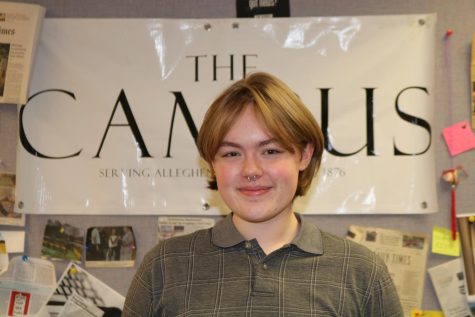
Sam Heilmann, Opinion Editor
Sam Heilmann is a sophomore from Johnstown, PA. She is majoring in Communications. This is her second year on the Campus staff, and her first as Opinion Editor. When she isn’t writing for The Campus, she enjoys painting, listening to music and spending time with her friends.




